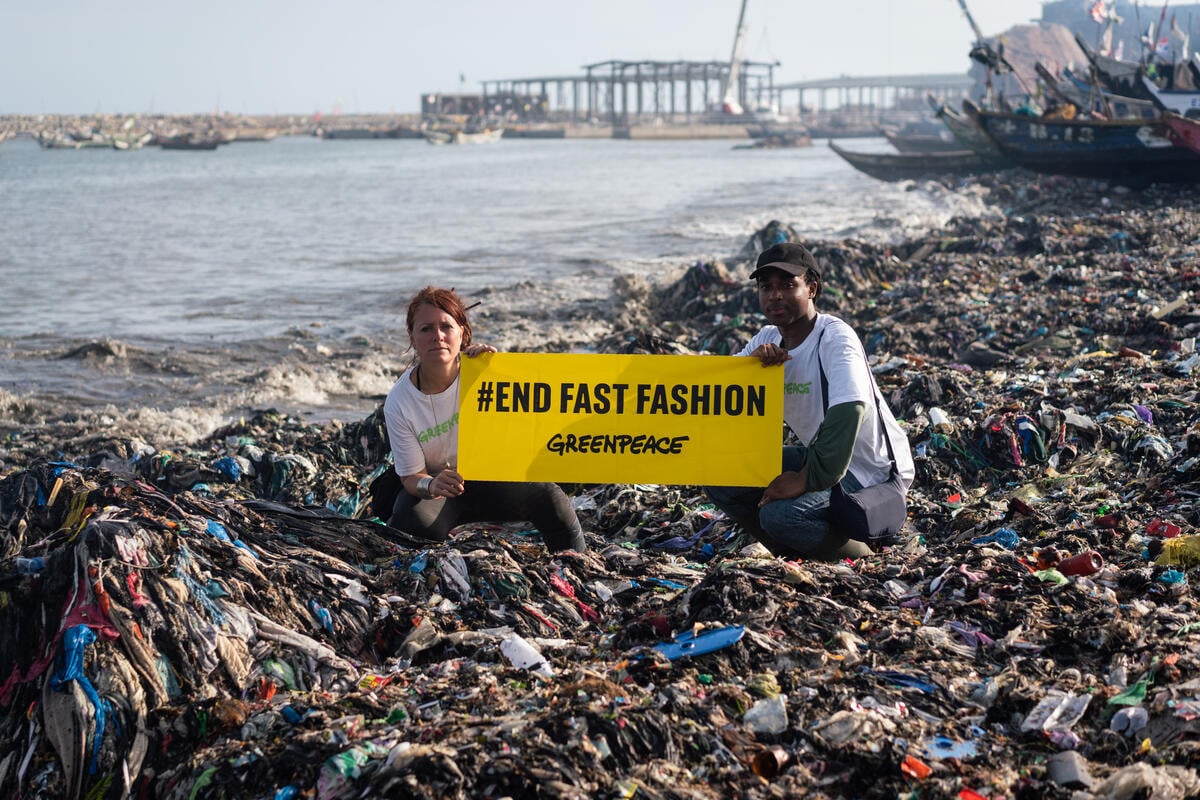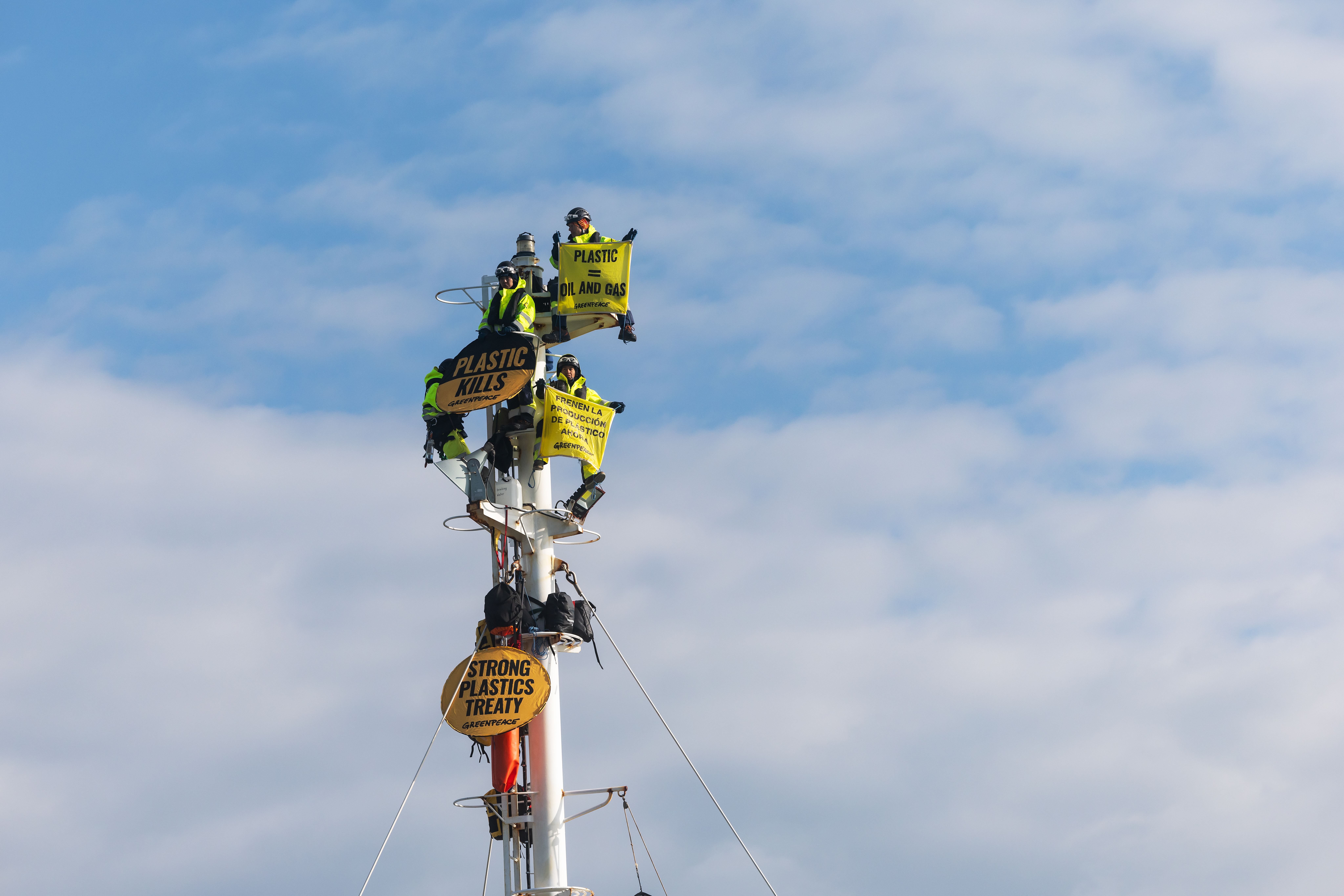What’s going on?
Fast fashion brands are promoting circularity, but reality shows that this is still a myth. Nowhere is the failure of the fast fashion linear business model more visible than in the countries where many of these cheap clothes end up once their short lives are over: on huge dump sites, burnt on open fires, along riverbeds and washed out into the sea, with severe consequences for people and the planet.
I went on a research trip to Kenya and Tanzania to witness the problem of imported textile waste in these countries. You can read the findings in the new “Poisoned Gifts” briefing released by Greenpeace Germany.
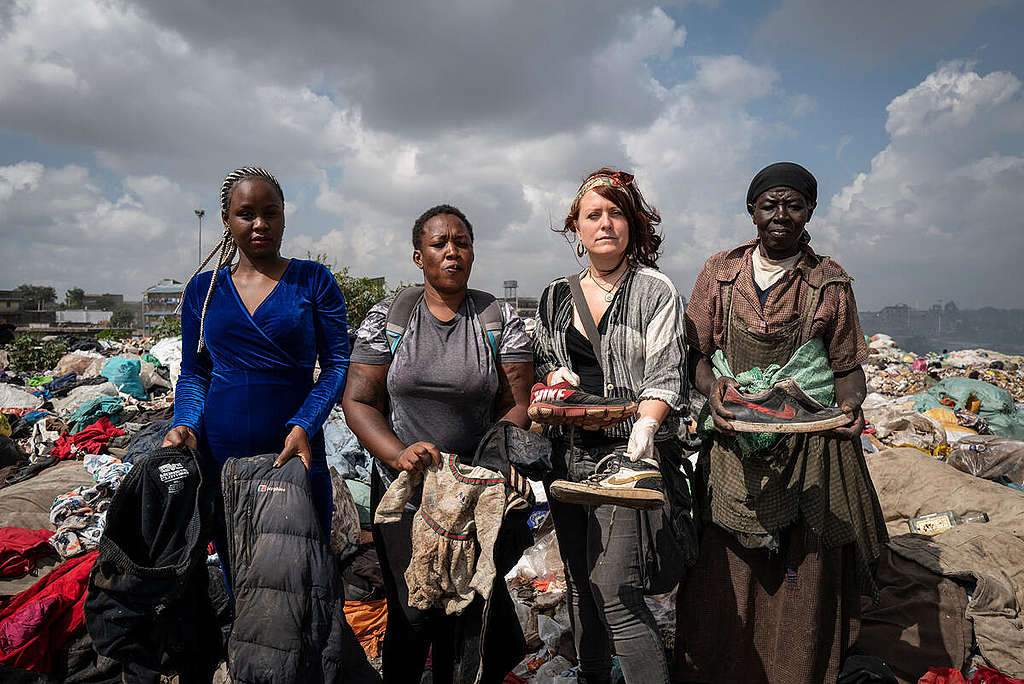
Why it matters
When people donate their used clothes to a charity, bring them to a take-back box at a brand’s store, or to a municipal recycling station, they might assume that they will be sold for a good cause at a charity thrift store, or will be recycled into new clothes.
The reality is, that only a small amount (about 10 to 30 percent) is actually resold in the country where the clothes were collected. Some are downcycled into lower grade products like rags, and more than half of them are exported for “reuse”, mostly to East and West Africa and Eastern Europe.
A closer look
To find out more about what happens to these used and exported clothes, I went to visit two of the top 5 global net importers: Kenya and Tanzania. I learned that in these countries, imported second-hand clothes are known as “Mitumba”, a Kiswahili word meaning bale or bundle, because they are typically sold to retailers in bales. Mitumba is relevant for many people and the economy in Kenya and Tanzania.
But when I was talking to vendors at Gikomba market, in Nairobi, they told me that these days they are often disappointed when they open the bales, because nearly half of the clothes are unusable and have no market value: their quality is too poor, or they are broken or soiled and are nothing more than textile waste.
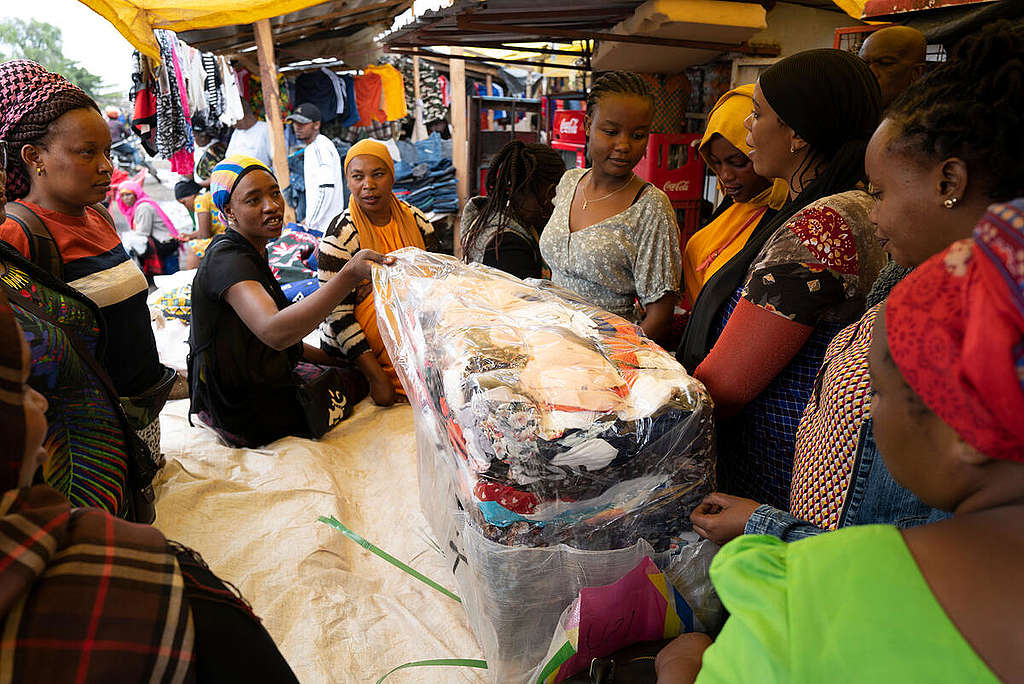
So it turns out that the Global North has found a backdoor to get rid of its textile waste problem through the export of used clothes to countries of the Global South, forcing them to deal with the consequences of fast fashion, even though they have no infrastructure to do so.
Walking down from the Gikomba market to the Nairobi River, I was shocked to find I was literally walking on textile waste which was piling up along the river banks, falling into the water and flowing downstream.
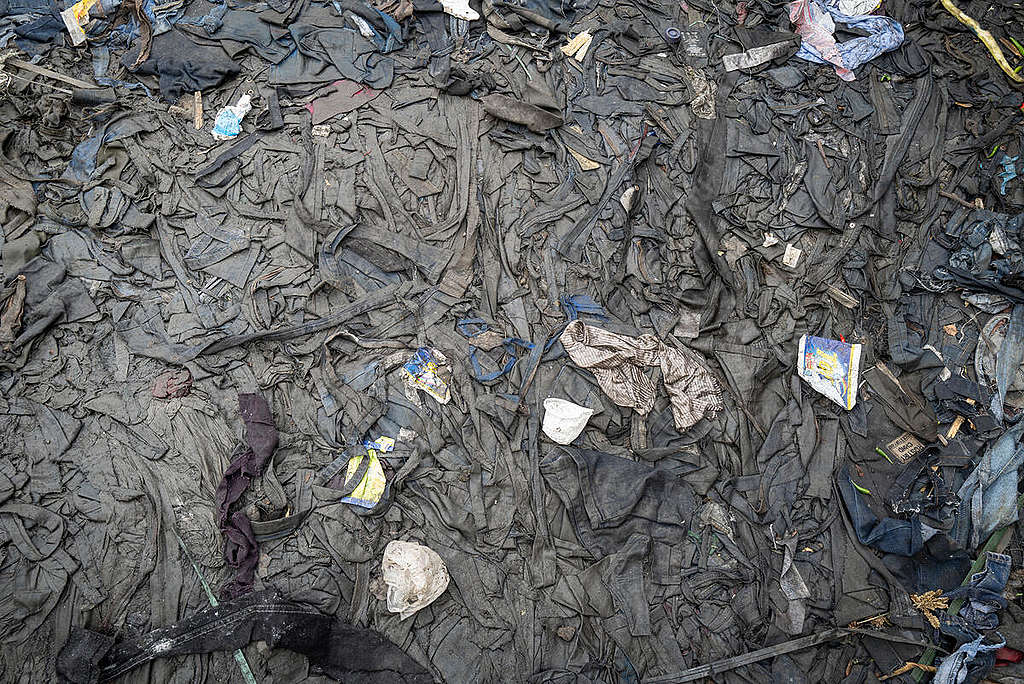
In the evening some people burnt shoes and textiles on open fires to try to deal with the problem, and my eyes started burning from the polluted air. This smoke adversely affects people’s health living in the area.
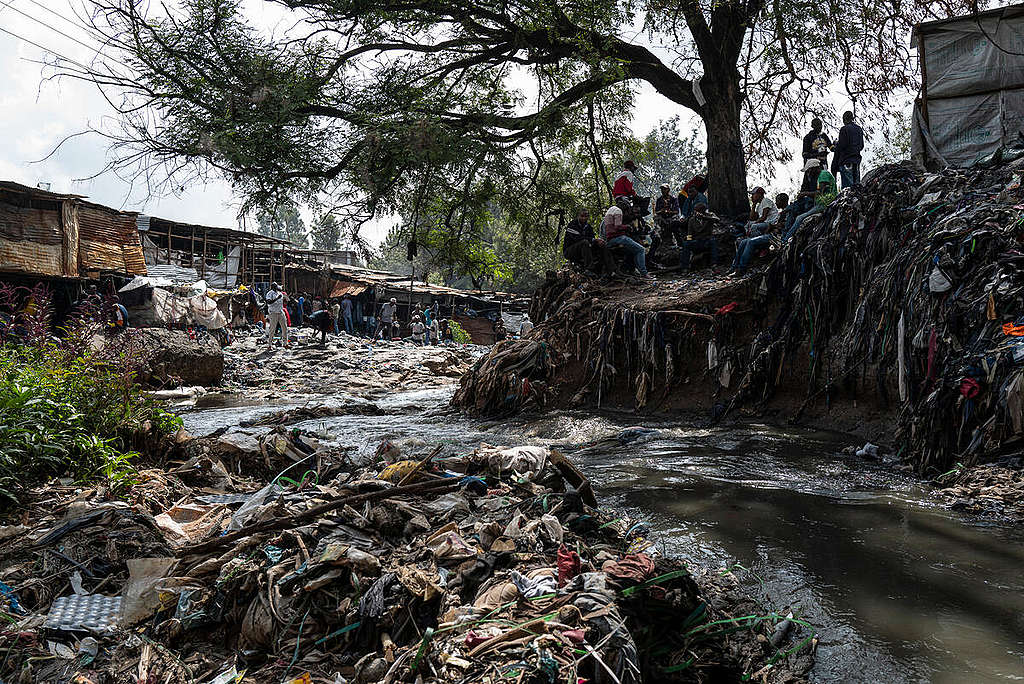
The ever increasing overproduction of fast fashion has led to increasing amounts of used clothing being exported from the Global North to the Global South. In 2019 Kenya imported 185,000 tonnes of second-hand clothes and with about 30 to 40 percent of Mitumba having no market value, this means that 55 500 – 74 000 tonnes was actually textile waste. Every day about 150 to 200 tonnes of textile waste – between 60 to 75 truckloads – ends up dumped, burnt, or sent to overflowing dump sites like Dandora.
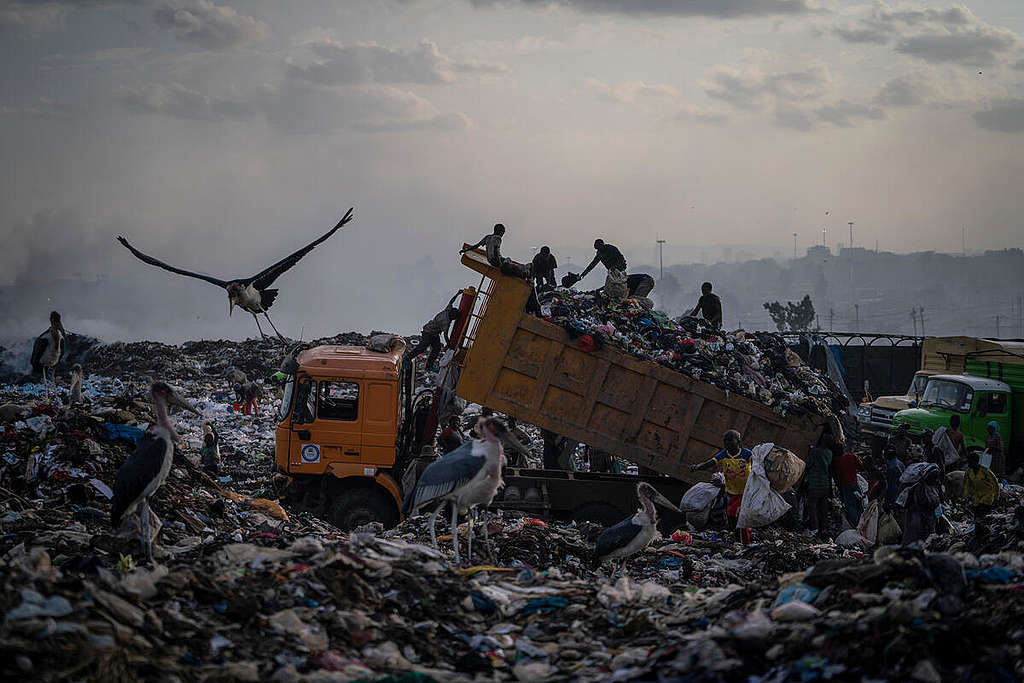
What we’re saying about it
The fast fashion trend has turned clothes into throwaway items like disposable packaging. To stop the flow of textile waste being dumped on the Global South, there is no way around massively slowing down fast fashion. Global fashion brands need to completely change their linear business models and start producing fewer clothes that are designed to be better quality, longer lasting, repairable and reusable.
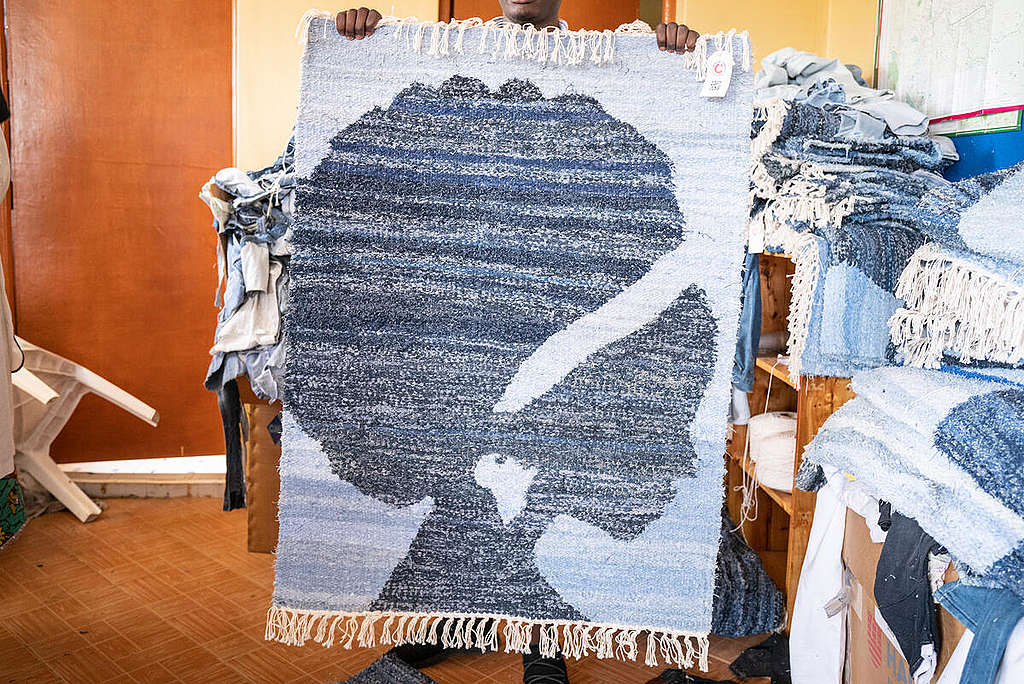
In addition, there needs to be a shift away from the neocolonial attitudes of Global North countries towards those in the Global South, which impose trading practices mainly beneficial for the Global North. This effectively turns Global South countries into dumping grounds for fast fashion waste, while doing little or nothing to support or develop the clean manufacturing of local textiles and garment production that is needed in these countries, using the same high standards and best practices that are required in Europe.
What needs to happen
These shocking pictures of massive amounts of textile waste polluting the environment clearly reveal that it’s not enough for global fashion brands to only focus on cleaning up their supply chains. Greenpeace is urging them to step up their efforts to stop the huge end-of-life impacts of their products.
Recently the new EU textile strategy was released, which includes some important steps, such as a plan to ban the export of textile waste and promote long lasting, durable and repairable clothing. This is a good start, but to effectively stop the ever increasing devastating effects of fast fashion on people and the environment, regulation of the fashion industry needs to be established internationally through a global treaty.
Viola Wohlgemuth is a Circular economy and Toxics Campaigner at Greenpeace Germany.


